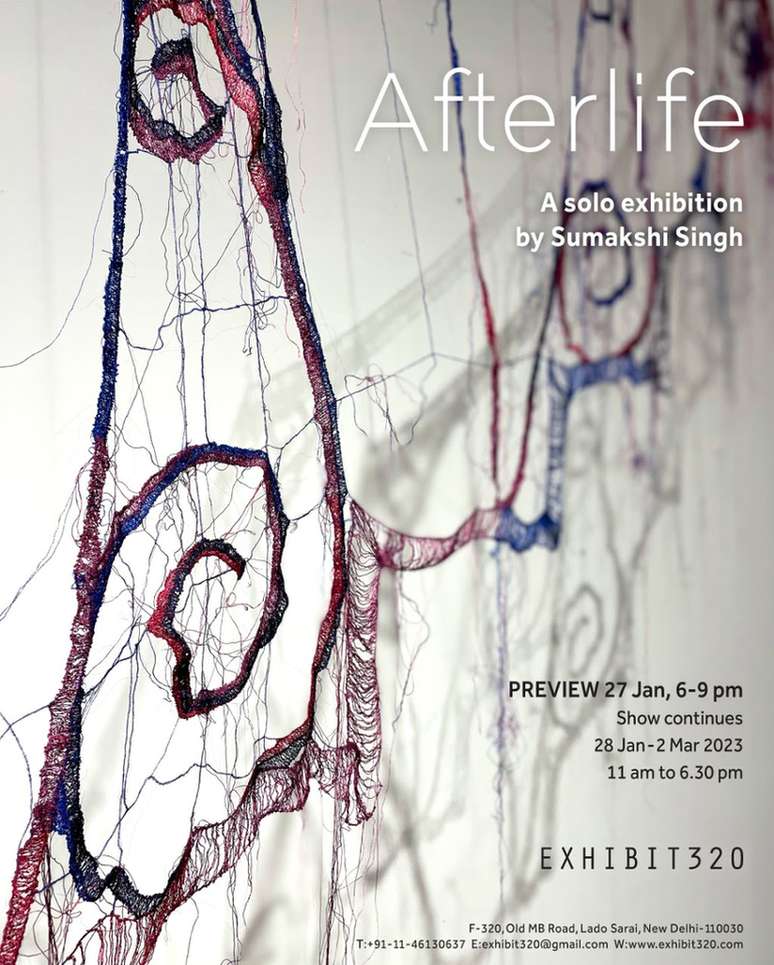
Singh's solo exhibition "Afterlife" will feature ethereal thread drawings, installations, and animations of architectural fragments from her (now defunct) family home as they fracture and unravel into entropy.
Sumakshi Singh is an artist and academic based in New Delhi, who also enjoys working as an academic. She has taught at the Art Institute of Chicago, Oxford University, and Columbia University among others. Recently, Sumakshi designed the renowned windows for Hermès, India. She has mentored residencies for The Victoria and Albert Museum, TheWhyNotPlace 2010 and 2011, and curated for the Devi Art Foundation.
She is the recipient of several awards, including the Asia Arts Future Game Changer award by the Asia Society in 2022 ( to honor artists for their significant contributions to contemporary art), the YFLO award (from the Federation of Indian Chambers of Commerce & Industry) for achievement in the arts in 2019, a Zegna Grant in 2009, an Illinois Arts Council Award in 2007 (in recognition of outstanding work and commitment within the arts) and the Richard H. Driehaus Foundation Award in 2005 (to support and encourage excellence, artistry, focus, direction, maturity, and originality in the visual arts).
Singh's installations open up a rich, silent space, which lies just before the world solidified by our perceptions. Our everyday 'given' are often questioned as her work begins to dissolve familiar forms and intimate memories into insubstantial mirages.
Afterlife
In her artistic oeuvre, Sumakshi Singh reconfigures the familiar axes of experience by engineering illusions through line and trace. The concrete constitution of architectural facades dissolves into textile ephemera, creating a mise-en-scene of spectral architectonics.
Now uninhabitable, the facades offer themselves as experiential maps, harking back to the artist's palpable memories of her ancestral home on 33 Link Road, Delhi. Settled into by her deceased grandparents and standing for almost 70 years, the house no longer feels familiar to the artist like it did when it was still occupied. Singh started to look at the house and its constituent objects, corridors, and surfaces anew, and replicated them in her work with dimensional exactitude. Mounted to scale in the gallery, the house breathes through its simulation, attesting to an intense artistic need for perusal, absorption, and ultimately, surrender.
The installations are created using thread of different kinds, levitating with wires to achieve the intended effect. Shadows are cast on the walls both naturally (against interior light sources) and through textile doubling, which further confounds vision. In contrast to Singh's installations in pre-Covid times, these works reveal a distinct sense of unravelling. Departing from the defined and measured contours of her earlier hand, Singh's concentrated experience of vulnerability, fear, and grieving during the pervasive malaise over the past two years percolated into her artistic sensibility. The threadwork on display then becomes, in Singh's words, a “transitional tapestry”, situated in the collisions of time, space, and memory.
Through its recreations in embroidery, the house becomes a sentient archive. Memory is externalised and transferred to a material placeholder in thread, which activates the contours of a habitat on the brink of collapse. Scheduled to be sold or demolished in the near future, the house shifts anchors through Singh's work, reflecting her labour in processing a future past.